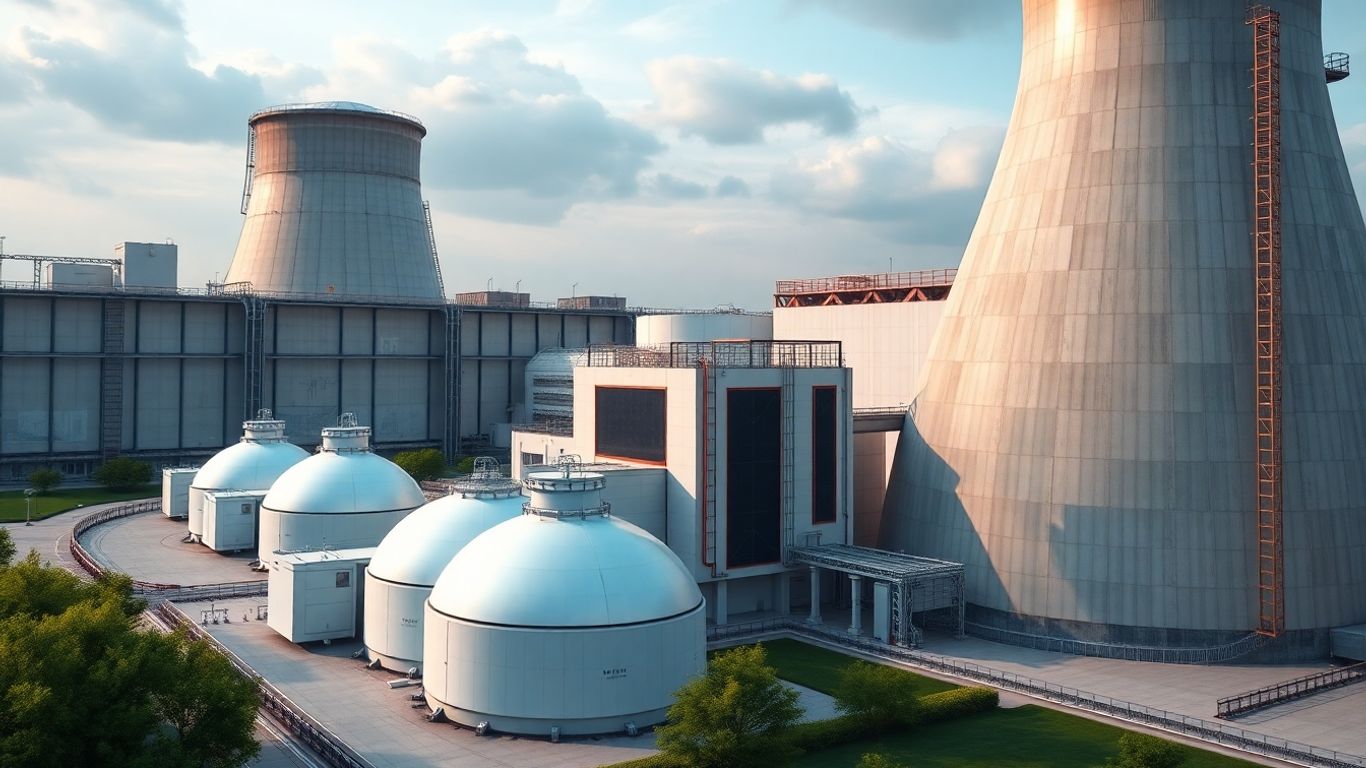The International Atomic Energy Agency (IAEA) has significantly boosted its projections for nuclear power, forecasting that global capacity could more than double by 2050. This optimistic outlook, detailed in the agency’s latest report, highlights the crucial role of Small Modular Reactors (SMRs) and the extension of existing reactor lifespans in achieving this expansion.
Key Takeaways
- Global nuclear capacity could increase from 377 GW in 2024 to nearly 992 GW by 2050 in a high-case scenario, representing a 2.6-fold increase.
- Small Modular Reactors (SMRs) are expected to contribute significantly to new capacity, potentially accounting for 24% in the high-case scenario.
- Extending the operational life of existing nuclear reactors is identified as a cost-effective strategy to maintain and grow nuclear’s contribution to the energy mix.
- Factors driving this growth include climate change concerns, rising electricity demand, policy support, and financing from development banks.
IAEA’s Ambitious Projections
The IAEA’s 45th edition of "Energy, Electricity and Nuclear Power Estimates for the Period up to 2050" presents two potential futures for nuclear power. In the high-case scenario, nuclear capacity could surge by 18% by 2030 and reach 2.6 times its current level by 2050. This would lead to a slight increase in nuclear power’s share of the global energy mix. Conversely, a low-case scenario predicts more modest growth, with capacity increasing by 13% by 2030 and 32% by 2050, resulting in a small decline in its overall share.
The agency has been consistently revising its forecasts upward for the past five years, a trend that began after the 2011 Fukushima disaster. This shift reflects a growing global consensus that nuclear energy is vital for achieving clean, reliable, and sustainable electricity, driven by increasing concerns about climate change and energy security.
The Pivotal Role of SMRs and Reactor Life Extensions
Small Modular Reactors (SMRs) are identified as a key differentiator between the high and low-case scenarios. These smaller, more adaptable reactors are seen as crucial for expanding nuclear power’s reach, particularly in regions with smaller grids or limited infrastructure. In the high-case projection, SMRs are anticipated to supply 24% of the new capacity added by 2050, compared to just 5% in the low-case scenario.
Furthermore, extending the operational lifetimes of existing nuclear power plants is emphasized as a critical strategy. With two-thirds of the world’s reactors operating for over 30 years, maintaining and upgrading this fleet is essential to prevent significant capacity loss. The IAEA’s high-case scenario assumes only 81 GW of capacity will retire by 2050, while the low-case projects retirements of 156 GW.
Drivers and Challenges for Nuclear Expansion
Several factors are fueling the renewed interest and investment in nuclear power. These include global commitments to reducing carbon footprints, the increasing demand for electricity driven by technological advancements and industrial growth, and financial backing from institutions like the World Bank for nuclear projects and SMR development.
However, scaling up nuclear power presents significant challenges. The high-case scenario requires an average of 26 GW of new nuclear capacity annually, a substantial increase from the recent five-year average of 5.9 GW. Addressing these challenges will involve supporting newcomer countries in developing the necessary technical, legal, and financial frameworks, adapting regulations to accommodate new technologies like SMRs, and securing substantial investments through innovative funding models. The IAEA is actively working with nations to overcome these hurdles and position nuclear energy as a cornerstone of the future clean energy landscape.












